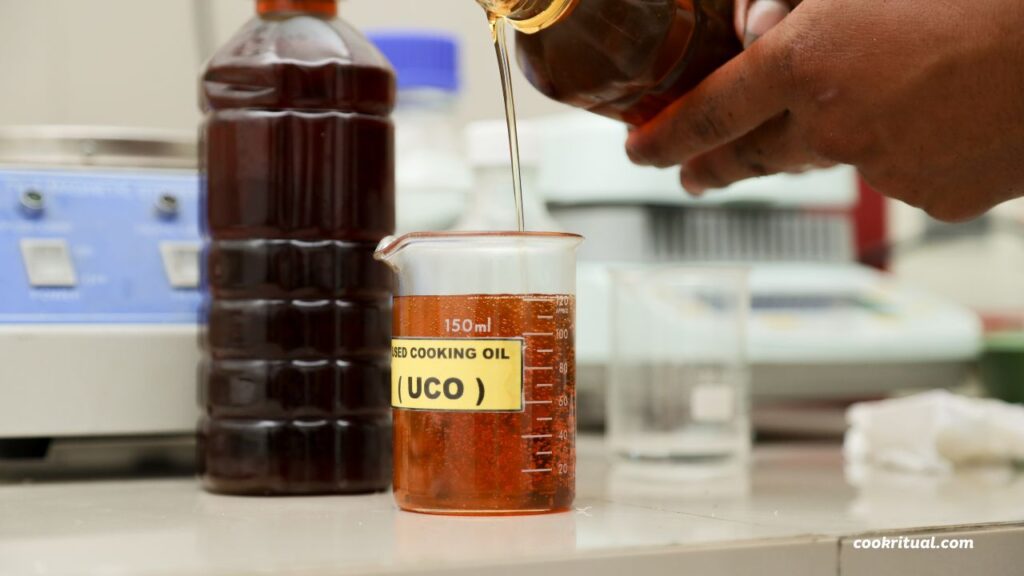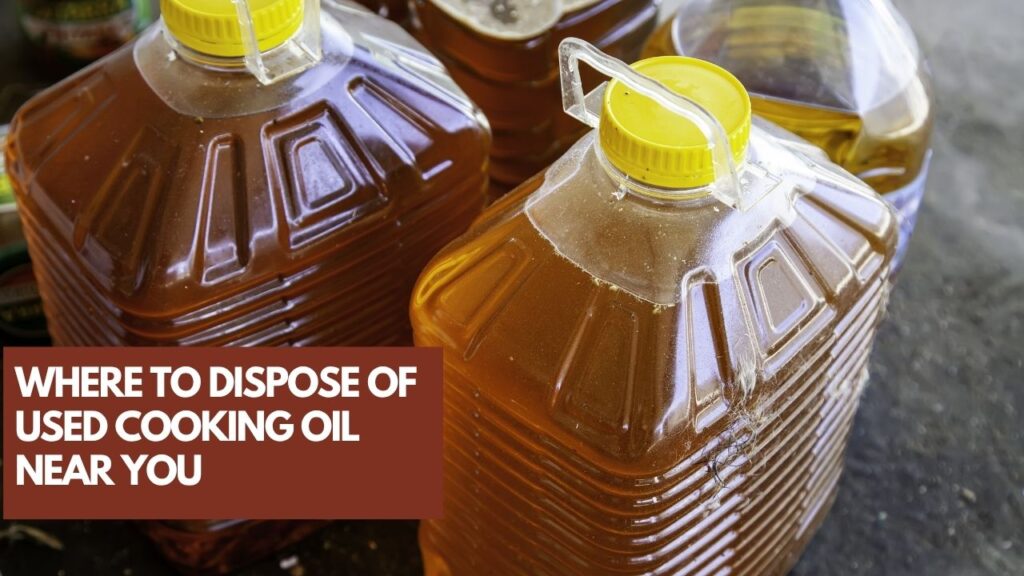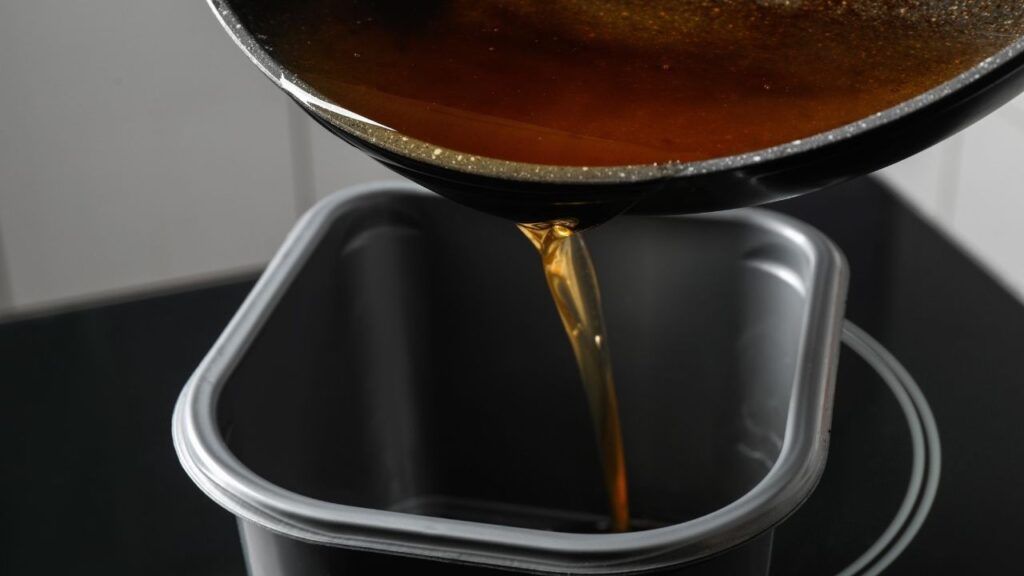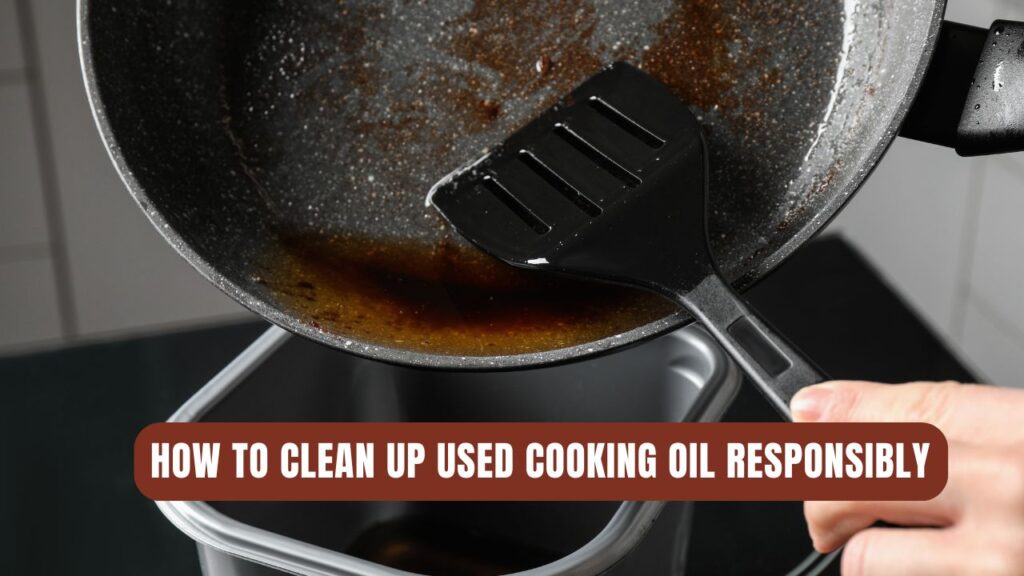Pouring used cooking oil down the drain might seem like the easiest option—but it’s one of the worst things we can do for our plumbing, our community, and the environment. Grease buildup can clog pipes, damage municipal sewer systems, and pollute local waterways. Fortunately, there are easy, eco-friendly ways to dispose of used oil safely—and even reuse or recycle it with minimal effort.
Whether we’re cooking a weekend feast or just sautéing veggies on a weeknight, managing leftover oil is something every home cook faces. As health-conscious individuals and busy professionals, we strive to make smart kitchen choices—not only in what we eat but also in how we clean up. That includes making responsible decisions about grease and oil disposal.
In this guide, we’ll explore simple, sustainable methods to clean up and dispose of used cooking oil responsibly. We’ll cover everything from recycling options and DIY tips to eco-friendly products and local drop-off services, helping us keep our kitchens clean and our environment green.
Contents
- 1 What Happens If You Don’t Dispose of Cooking Oil Properly?
- 2 Can You Reuse or Recycle Used Cooking Oil?
- 3 Step-by-Step Guide: How to Dispose of Used Cooking Oil the Right Way
- 4 Where to Dispose of Used Cooking Oil Near You
- 5 Eco-Friendly Cooking Oil Disposal Products
- 6 Common Mistakes to Avoid When Getting Rid of Used Cooking Oil
- 7 Frequently Asked Questions (FAQs)
- 8 Grease Traps and Kitchen Maintenance Tips
- 9 DIY & Creative Ways to Repurpose Used Cooking Oil
- 10 Comparisons: Trash Disposal vs. Recycling vs. Composting
- 11 Final Thoughts: Choosing the Best Option for Your Home
What Happens If You Don’t Dispose of Cooking Oil Properly?
Used cooking oil may seem harmless, but tossing it down the sink or into the yard can cause big problems. When oil cools, it thickens and sticks to pipes. Over time, this leads to clogs that can block home plumbing and entire city sewer lines.
According to the EPA, grease and oil are top causes of sewer backups in U.S. homes. These backups can lead to raw sewage overflows—posing serious health risks and costly damage.
Improper disposal also harms the environment. When oil washes into storm drains, it often flows into rivers and lakes. There, it creates a film on the water’s surface. This blocks oxygen, hurts wildlife, and disrupts aquatic life.
Bottom line? One small action in the kitchen can cause big trouble outside our homes.
Can You Reuse or Recycle Used Cooking Oil?

Yes, and it’s easier than most people think. Reusing or recycling oil is a smart way to reduce waste and even save money.
Reusing Cooking Oil at Home
We can reuse oil a few times if we strain out any food bits and store it properly. This works well for oils used in frying or sautéing. Be sure to use low-heat oils like olive oil only once, while high-smoke-point oils like canola or peanut oil can be reused up to 2–3 times. Always discard oil that smells bad, foams, or turns dark.
Recycling Cooking Oil into Useful Products
Used cooking oil is valuable. It can be turned into biodiesel, a cleaner-burning fuel made from natural fats and oils. Many cities have recycling centers or drop-off programs that accept used cooking oil and convert it into energy or even soap.
To find options nearby, try Earth911’s locator. Just enter “cooking oil” and your ZIP code to see what’s available.
Step-by-Step Guide: How to Dispose of Used Cooking Oil the Right Way
Disposing of oil doesn’t have to be hard. Here’s a simple method we can follow every time:
Let the Oil Cool Down Completely
Never handle hot oil. Wait until it cools to room temperature. This makes it safer to pour and prevents burns or spills.
Strain or Filter to Remove Food Bits
Leftover bits in oil can cause mold or odor. Use a fine mesh strainer, cheesecloth, or coffee filter to remove solids before storage.
Choose the Right Storage Container
| Container Type | Pros | Cons |
| Glass jar with lid | Leak-proof, reusable, heat-resistant | Can break if dropped |
| Tin can (e.g., soup can) | Disposable, easy to find | May rust or leak if stored long |
| Plastic bottle (PET/HDPE) | Lightweight, often recyclable | Not suitable for very hot oil |
| Biodegradable bag | Eco-friendly, made for grease disposal | May be more costly |
Choose a container based on how you plan to throw it out or reuse the oil.
Decide How You Want to Dispose of It
- Trash (only where allowed): If your city lets you throw it away, seal the oil in a tight, leak-proof container. Don’t pour it directly into the trash bin.
- Recycle: Use a local cooking oil recycling program. Drop off at events, city collection sites, or even certain grocery stores.
- Compost (very small amounts only): Some vegetable oils can be composted in tiny amounts, but always check with your local guidelines. Never compost animal fats.
Used oil is part of cooking—but with the right steps, we can make sure it never becomes part of the problem.
Where to Dispose of Used Cooking Oil Near You

Finding a place to drop off used cooking oil is easier than many people think. Most cities in the U.S. have programs to keep oil out of landfills and drains. The key is to look in the right places and follow local rules.
How to Find a Local Oil Recycling Center
We can start by checking with our city’s public works or waste management department. Many towns list recycling drop-off points on their official websites. Some also host household hazardous waste collection days, where residents can bring used cooking oil, paint, and other items that don’t belong in the trash.
To make it even easier, we can search Earth911 or use the Recycling Locator by RecycleNation. Just type in “cooking oil” and our ZIP code.
Municipal Hazardous Waste Programs
These programs collect oil and other household materials in a safe and eco-friendly way. Some offer curbside collection on scheduled days. Others provide permanent drop-off sites. It’s best to call ahead and ask if cooking oil is accepted.
Cooking Oil Collection Services
In larger cities, we may find local businesses or recycling companies that offer oil pick-up services—great for busy households or those who cook in bulk. Some even pay for large quantities of used oil. For example, Mahoney Environmental and DAR PRO Solutions serve both homes and restaurants in many U.S. regions.
Eco-Friendly Cooking Oil Disposal Products

Sometimes, we need a little help getting oil into the right container or keeping messes under control. That’s where these tools come in. They’re affordable, easy to use, and kind to the planet.
Grease Solidifiers and Oil Absorbents
These products turn leftover oil into a gel or solid that can be tossed in the trash (if allowed locally). One popular brand is Fat Trapper, which uses disposable foil-lined bags to collect and store grease safely.
Other options, like Grease Hero, fit into a sink drain and absorb oil while keeping pipes clean.
Biodegradable Disposal Bags
These bags are heat-resistant and made to hold cooking oil and grease. We can pour cooled oil into the bag, seal it, and throw it out with regular waste (check local guidelines first). Brands like Green Gobbler make eco-friendly choices easy.
Grease Disposal Containers for Home Kitchens
Reusable containers with lids, spouts, and strainers help us store used oil until we’re ready to dispose of or recycle it. Stainless steel models are durable and safe for hot liquids. These tools are perfect for people who cook often and want a clean, simple solution.
Common Mistakes to Avoid When Getting Rid of Used Cooking Oil
It’s easy to make mistakes when dealing with greasy leftovers, especially if we’re in a rush. But these habits can cause long-term damage to our plumbing and the environment.
- Pouring oil down the sink or toilet: Even small amounts can cause pipe blockages. Over time, this leads to fatbergs in sewers—huge clumps of fat, oil, and trash that cost cities millions to remove.
- Mixing oil with yard waste or compost bins: Most compost systems aren’t built to handle fats. Oil can slow down decomposition and attract pests.
- Using thin plastic bottles or leaky containers: These can break open in the trash or recycling bin. Always pick sturdy, sealed containers made for oil.
- Not letting oil cool before handling: Hot oil can burn skin or melt containers. Let it cool to room temperature before touching or moving it.
By staying mindful and avoiding these common errors, we can protect our homes and support a cleaner, greener planet.
Frequently Asked Questions (FAQs)
Can I put cooking oil in the compost bin?
Small amounts of vegetable oil can sometimes be composted, but it depends on your local compost program. Most community compost sites do not accept oil because it can attract pests and slow decomposition. Check with your local waste authority before adding oil to compost.
Is it legal to dump oil in the trash?
Laws vary by state and city. Some places allow small amounts of cooled, sealed oil in the trash, while others require recycling or special disposal. It’s safest to use a local recycling program or collection center to avoid fines or environmental harm.
How do restaurants dispose of cooking oil?
Restaurants usually work with professional grease haulers who pick up large volumes of used oil. This oil is often recycled into biodiesel or other products. Many cities require commercial kitchens to follow strict oil disposal rules to prevent sewer damage.
What oils can be reused, and for how long?
Oils like peanut, canola, and vegetable oil can be reused 2-3 times if strained and stored properly. Olive oil has a lower smoke point and is best used only once. Always check for signs of spoilage like off smell, dark color, or foaming before reuse.
Grease Traps and Kitchen Maintenance Tips
If you cook frequently, installing a grease trap can protect your plumbing and the environment. Grease traps catch fats and oils before they enter the sewer system, making cleanup easier.
Installing and Maintaining a Grease Trap at Home
We recommend choosing a grease trap size based on your kitchen usage. Clean it regularly—usually once a month—to avoid buildup. Many traps come with easy-to-remove baskets or filters for quick cleaning.
Best Practices for Keeping Your Plumbing Safe
- Avoid pouring hot oil directly into drains.
- Use strainers in sink drains to catch food scraps and grease.
- Wipe greasy pans with paper towels before washing.
- Regularly flush drains with hot water and a little dish soap.
Monthly Cleaning Tips to Prevent Buildup
- Remove and clean trap filters.
- Use baking soda and vinegar to break down minor grease deposits.
- Schedule professional plumbing inspections if you notice slow drains or odors.
DIY & Creative Ways to Repurpose Used Cooking Oil
Used cooking oil doesn’t have to go to waste. Here are some fun and eco-friendly ideas to give it a second life.
Homemade Candles or Lamps
With some basic supplies, used vegetable oil can fuel DIY oil lamps or candles. These are great for outdoor lighting or emergencies.
Making Soap with Used Vegetable Oil
Soap making is a classic way to recycle oil. Combining used oil with lye and water creates natural soap that’s gentle and effective.
Use in Animal Feed (Only in Limited, Approved Contexts)
Some farms reuse small amounts of cooking oil in animal feed, but this should only be done under expert guidance to avoid health risks.
Comparisons: Trash Disposal vs. Recycling vs. Composting
Understanding the best way to handle used cooking oil means comparing common disposal methods. Here’s a quick look at the pros and cons:
| Disposal Method | Pros | Cons | Best For |
| Trash Disposal | Easy, convenient if allowed locally | Can cause landfill issues, risk leaks | Small amounts in sealed containers |
| Recycling | Eco-friendly, turns oil into fuel or soap | Requires access to recycling centers | Large amounts or frequent cooking |
| Composting | Natural breakdown of some oils | Not accepted everywhere, attracts pests | Very small vegetable oil amounts only |
Recycling is generally the most sustainable choice, while trash disposal is a fallback for places without recycling programs. Composting oil should be done cautiously and only if local guidelines support it.
Final Thoughts: Choosing the Best Option for Your Home
Cleaning up used cooking oil responsibly is a simple step that makes a big difference. By understanding local disposal options, reusing when possible, and avoiding common mistakes, we protect our homes and environment.
We encourage everyone to explore recycling programs near them. When in doubt, store oil safely until you find a drop-off point. Small actions add up to cleaner pipes and healthier waterways.
Let’s make eco-friendly oil disposal part of our kitchen routine. It’s a smart, sustainable choice that supports a greener future for all.


